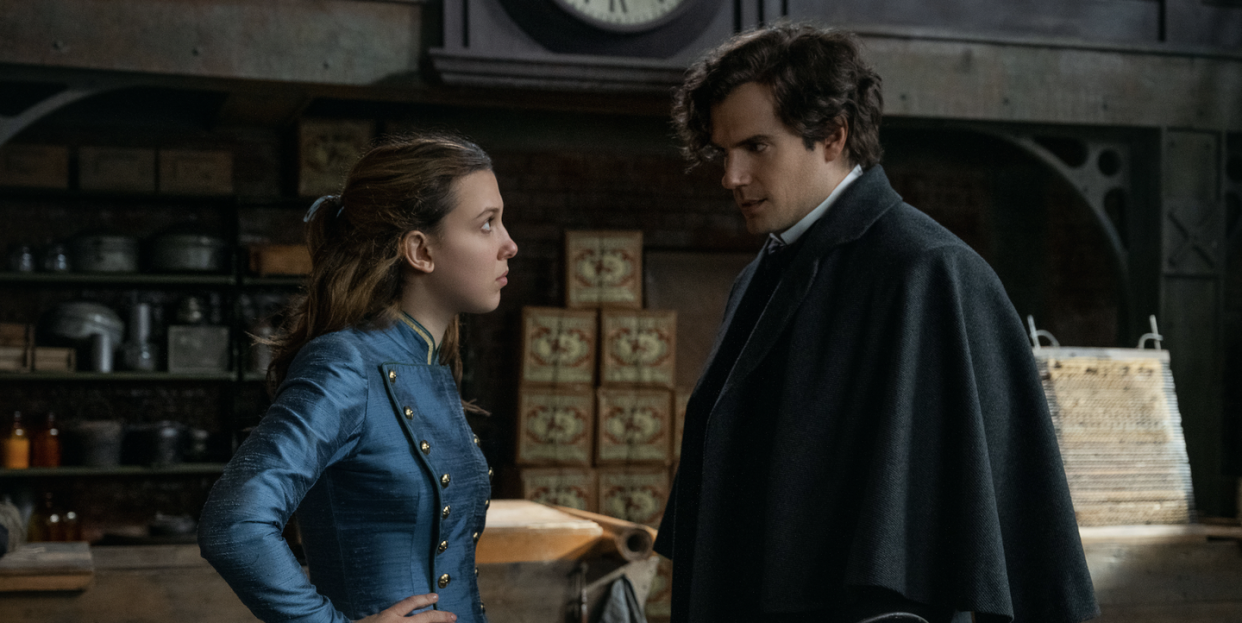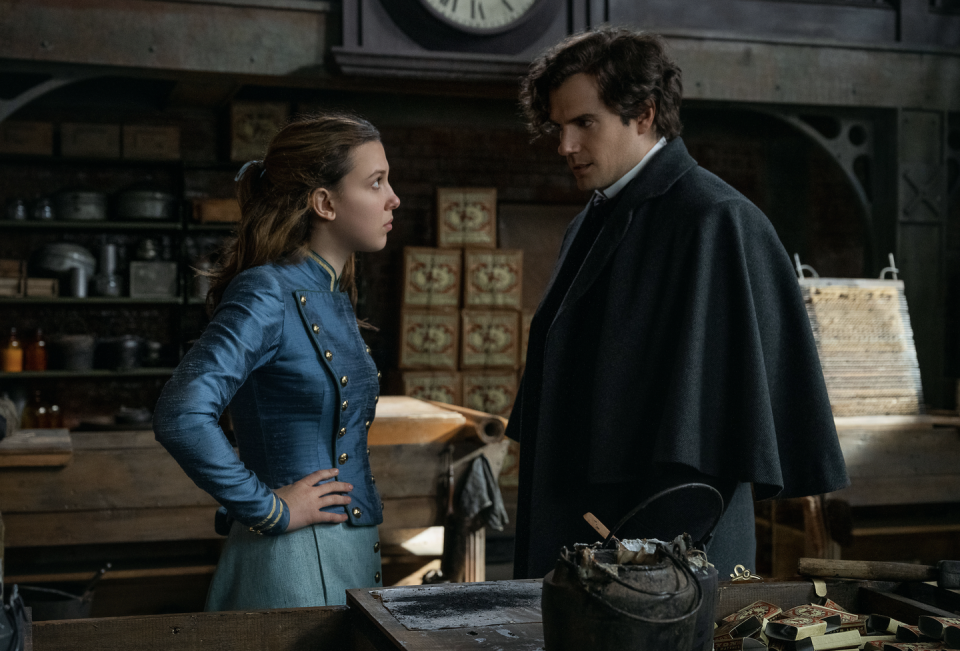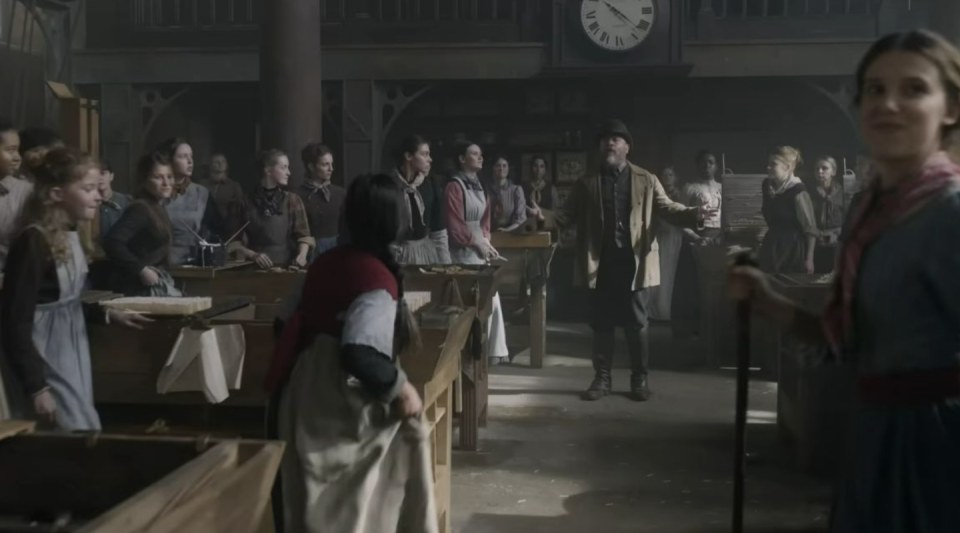What's the true story of the Matchgirls' strike in Enola Holmes 2?

- Oops!Something went wrong.Please try again later.
*Contains spoilers for Enola Holmes 2*
The long-awaited sequel of Enola Holmes, Enola Holmes 2, has finally dropped on Netflix and over the weekend it went straight into the number one spot in the Top 10.
Starring Millie Bobby Brown, as the titular character, Enola Holmes 2 sees Enola set up her own detective agency and attempt to the solve the case of missing girl Sarah Chapman, played by Hannah Dodd. Sarah worked at a matchstick factory and was reported missing by her younger sister Bessie, played by Serrana Su-Ling Bliss.
As Enola gets deeper into searching for Sarah she soon realises this missing person case is much bigger than she expected and finds herself entangled in a case of fraud, deception and murder. By the end of the film, it is revealed the match stick factory the girls are working at is poisoning them with white phosphorus, and Sarah was on a mission to expose them.
Enola Holmes 2 ends with revealing that Sarah Chapman was a real life person and one of the instigators of the Matchgirls' strike in 1888.

So who exactly was Sarah Chapman? And what did she do in the Matchgirls' Strike? This is everything you need to know.
Who was Sarah Chapman?
In Enola Holmes 2, Sarah Chapman (Hannah Dodd) is depicted as a match stick factory worker and a dancer at a local theatre. She is reported missing by her younger sister Bessie (Serrana Su-Ling Bliss) and Enola is on a mission to find her.
Sarah is revealed to not be missing at all but instead working towards exposing the Lyon family's matchstick factory for poisoning girls with white phosphorus.
In real life Sarah Chapman was born in 1862 as one of seven children and grew up in the east end of London. Unlike in the film, Sarah was still living with her family whilst working and didn't work at a theatre. By the age of 19 Sarah was working with her mother and older sister in the Bryant & May matchmaking factory. And in 1888 she was an instrumental part in the Matchgirls' Strike.
In 1891 Sarah got married to Charles Henry Dearman, a cabinet maker. They had six children and moved to Bethnal Green, where Sarah lived until her death in 1945.
What happened in the Matchgirls' Strike?
In June 1888 members of the Fabian Society (a socialist group) met and agreed to a boycott of the Bryant & May matchmaking factory over poor working conditions and treatment of workers.
As seen in Enola Holmes 2, the factory girls would often have their wages docked for talking or not working tidily. They would work for 14 hours a day and some suffered from a condition known as phossy jaw, which was caused by the white phosphorus seen in Enola Holmes 2.

Annie Besant, a social reformer, met with the factory workers and published a piece called White Slavery in London about the conditions the women were working under. The factory tried to get the workers to sign a statement rejecting the claims, but they refused.
On 5th July 1988 nearly 1,400 women and girls walked out of the factory over the working conditions.
Following the initial walk out Chapman and two other women met with Annie Besant for help in creating a strike committee. Over the years the women organised public meetings, got press coverage and campaigned for better working conditions for the staff of the factory.
Their work eventually led to the downfall of the Bryant & May factory and in 1908 white phosphorus was banned from being used in factories.
Enola Holmes 2 is available on Netflix now.
You Might Also Like

